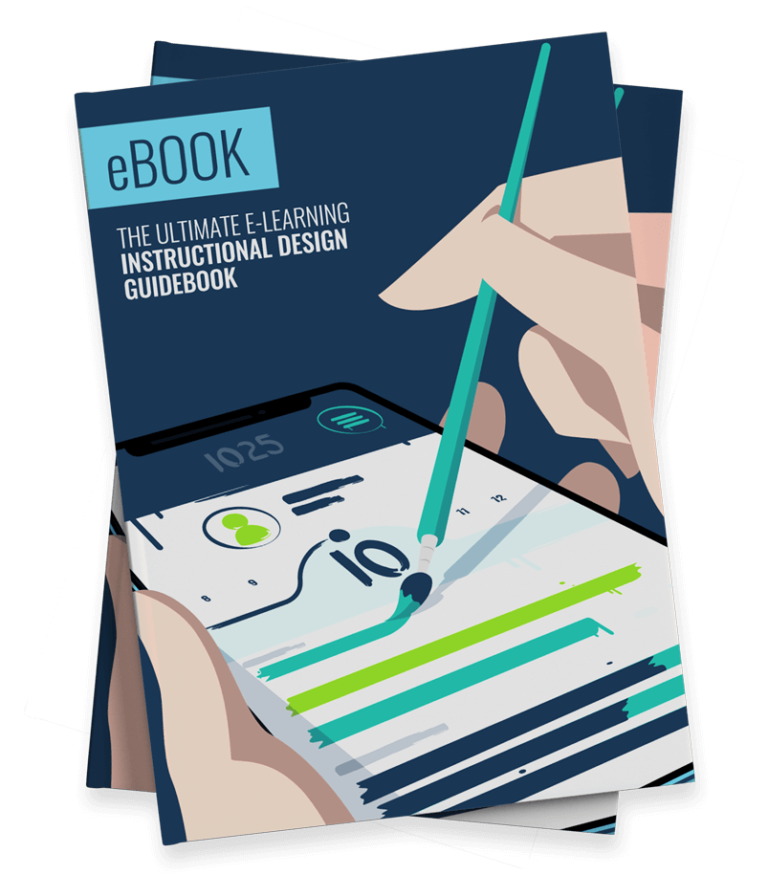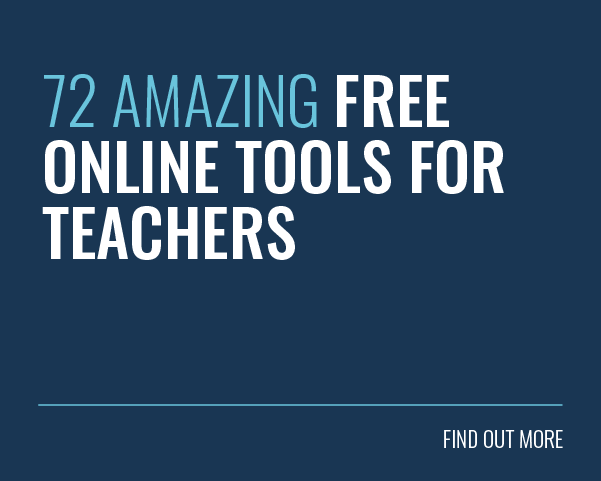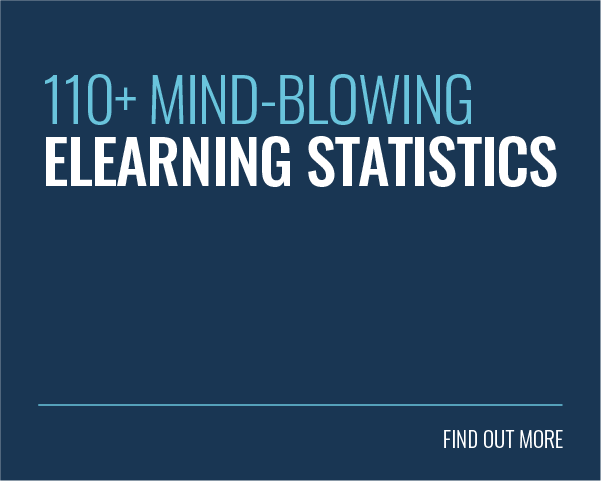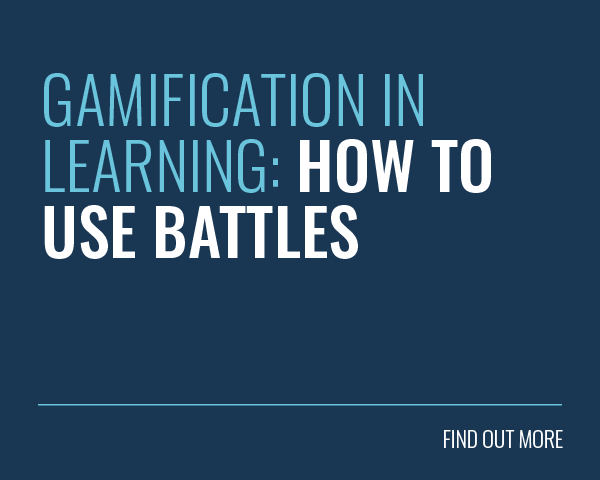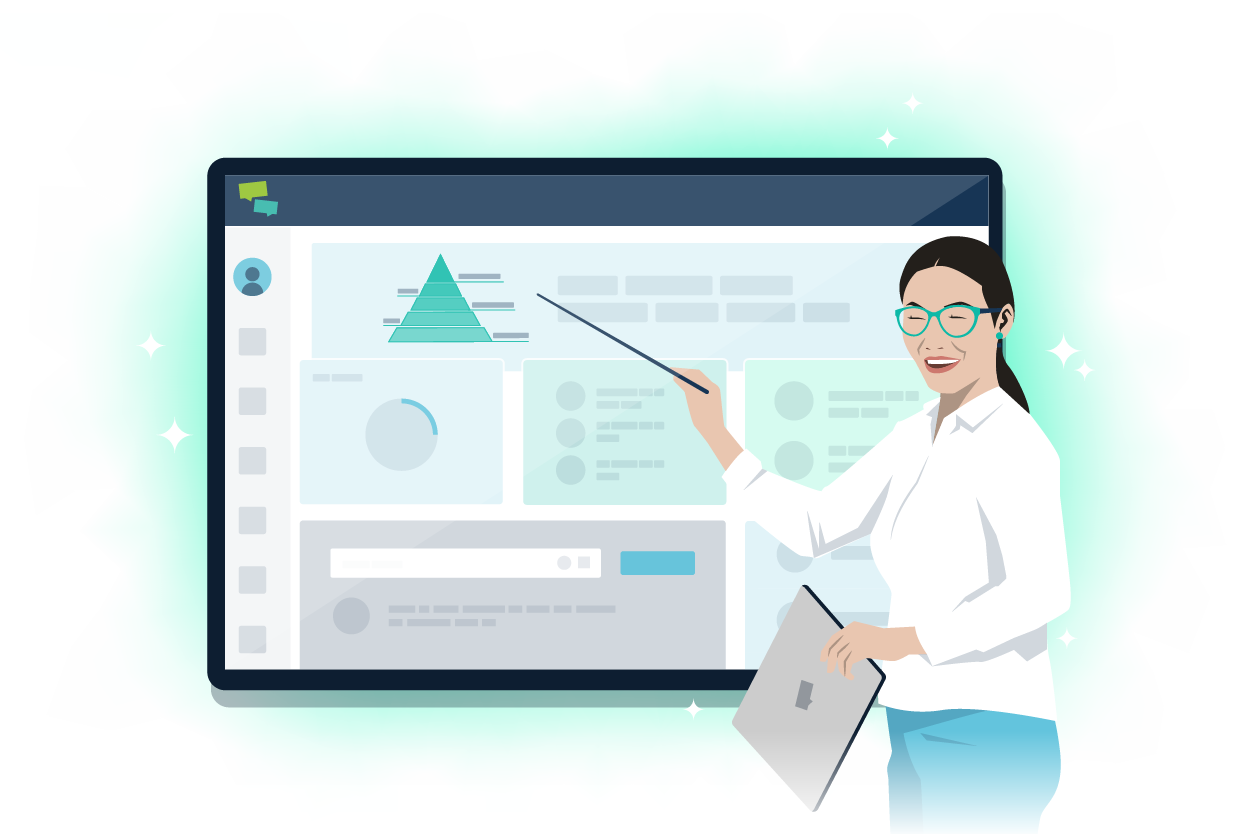
Learning has evolved beyond the confines of dusty lecture halls and weighty textbooks. eLearning has become a ubiquitous force in education and training, transforming the way we acquire knowledge and skills. But what exactly is eLearning, and how does it differ from other approaches?
Whether you spell it eLearning, Elearning or e-Learning, this term has become part of common parlance. As with email, e-commerce and eBooks, the ‘e’ stands for ‘electronic’. So, when you talk about eLearning, you’re actually talking about ‘electronic learning’.
Simple enough? Well, no actually. There’s still a lot of debate around what the term really means. In this article, we’ll be clearing up the confusion. We’ll also take you through eLearning’s historical background, some alternative approaches, and the benefits of electronic learning.
Let’s get going!
What is eLearning?
eLearning, short for electronic learning, is a broad term encompassing various methods of learning through electronic technologies.
These learning methods typically have a clear structure. In other words, simply consuming online information (through browsing a Wikipedia article, or watching a Youtube video, for example), doesn’t qualify as eLearning on its own.
Here’s what sets eLearning apart:
- Structure: eLearning typically involves a structured learning path with objectives, activities, and assessments.
- Interactivity: eLearning encourages interaction with the material, through quizzes, simulations, or discussions.
- Outcomes: eLearning allows for tracking progress and measuring outcomes through assessments and feedback mechanisms.
Some Important Distinctions

In the exciting world of online learning, it’s important to understand the difference between three key elements: content, courses, and platforms. Here’s a brief breakdown of each:
- Content: This refers to the individual pieces of information you encounter online that can be used for learning. They are the building blocks of your experience. Content comes in many different shapes and forms, such as text, videos, infographics, podcasts and more. While valuable for acquiring knowledge, this content doesn’t provide a structured learning path.
- Courses: On the other hand, courses are structured learning assets built using various content pieces. They are often created using an authoring tool and typically have defined learning objectives, activities, and assessments. They offer a more organised and focused learning experience compared to consuming isolated content. Collect enough courses together and you have yourself an online learning programme.
- Platforms: Finally, we have the online environments that host and deliver both content and courses. They provide the infrastructure for learners to access learning materials, interact with instructors, and track their progress. For instance, Growth Engineering LMS is an eLearning platform.
Clearing Up The Confusion
The key distinction is that eLearning focuses on the ‘how‘ of learning (electronic delivery), while individual online resources such as content and courses focus on the ‘what‘ of learning (the specific content).
For instance, imagine you’re ordering from a restaurant. The menu items (such as pizza, salad, dessert, etc.) are the specific content elements that you select from. In this scenario, eLearning is just the delivery method. It’s like selecting takeaway rather than choosing to dine in.
To help hammer this point home, check out this definition from the Oxford Home Study Centre:
‘The term ‘eLearning’ refers to the delivery of education and training through digital resources. Rather than attending lectures and classes in the conventional sense, eLearning uses modern technology to connect pupils and students with course content, learning resources and qualified tutors.’
eLearning: A Quick History Lesson

The term ‘eLearning’ has only been around since 1999. It was originally coined by researcher, educator, conference host and friend of Growth Engineering, Elliot Masie. However, eLearning as an entity has been around for much longer.
Electronic learning can be traced back to the first proto-LMSs created by Sidney Pressey in 1924. These were simple ‘teaching machines’ that looked like a typewriter with an additional display window. To make progress, learners would have to input answers to multiple choice questions.
In 1960, the first computer training programme was born. PLATO (Programmed Logic for Automatic Teaching Operations) was created at the University of Illinois. Not only was it a successful teaching system, but it also brought about one of the world’s first online communities. This expanded in the 1970s, as eLearning started to become more dynamic and interactive.
By the mid-1990s, early iterations of the LMSs we know and love today started to spread. Naturally, with the rise of the internet and easier access to online technology, the eLearning market grew at pace. This was mainly driven by educational institutions, who were looking to create distance learning solutions for their students.
Additionally, businesses started to use eLearning in their training initiatives to help reduce costs and expand their reach. As a result, since the year 2000, the eLearning market has grown by over 900%!
What About Now?
The eLearning market is now worth over a whopping $250 billion. And it’s showing no signs of slowing down. It’s projected to be worth $1 trillion by 2027.
Much of this growth can be attributed to the COVID-19 pandemic, which turbocharged digital transformation. As a result, many companies, schools, universities and other educational bodies have embraced eLearning and made it a permanent part of their processes moving forward.
Today, eLearning continues to evolve with advancements in mobile learning, gamification, and artificial intelligence, offering increasingly engaging and effective learning experiences.
How Does eLearning Differ from Other Similar Terms?
Now that we’ve defined eLearning, you may well be wondering how it contrasts with other similar terms. Unfortunately, the learning technology landscape is cluttered with ambiguous or unnecessary terms. Please consider the following list our attempt to cut through the noise:
1. Online Learning
As you might expect, with online learning, the main element is the internet. This can include both formal eLearning experiences, as well as informal learning activities.
For instance, watching educational YouTube videos, reading articles on a learning platform, or participating in online forums for knowledge sharing would all fall under online learning, but not necessarily eLearning.
2. Virtual Learning
Virtual learning centres around the creation of a simulated learning environment using technology. These learning experiences typically involve elements of immersion, real-time interaction and collaboration within a virtual space.
This could include virtual reality simulations, classrooms in the metaverse, or even some online role-playing scenarios used for training.
3. Digital Learning
This is a broad term that incorporates the use of any digital technology to facilitate learning experiences. This includes taking courses online, internet-based research, or even using digital tools (like smartboards, mind maps, quizzes and so on).
4. Remote Learning
Remote learning takes place when the learner and instructor aren’t both physically present within the same environment. As with virtual learning, the learner doesn’t have to be in a set location to make progress.
However, remote learning can take various forms. Furthermore, whilst it’s typically facilitated by the internet, it doesn’t have to be. For instance, you could conduct a remote learning programme via regular snail mail communications.
5. Distance Learning
As with remote learning, distance learning emphasizes the physical separation between instructor and student. Here, technology often acts as a bridge, making education accessible regardless of location.
This convenience factor is a major draw for many students, which has prompted universities to expand their offerings in distance learning courses, including full degree programmes.
eLearning Use Cases
eLearning’s applications are vast and extend far beyond traditional classroom settings. Here are some key use cases where eLearning shines:
- Online Degrees & Courses: Many universities and institutes offer complete degrees, diplomas and individual courses entirely online, providing flexibility and accessibility for learners across the globe.
- Educational Supplementation: eLearning resources can supplement traditional educational approaches by offering personalised learning paths, additional support, and knowledge sharing opportunities.
- Employee Onboarding: You can streamline your onboarding process for new hires by providing eLearning courses covering company policies, product knowledge, and essential skills.
- Professional Development: eLearning can also help you to offer ongoing training opportunities to your learners, ensuring they keep their skills current and ready themselves for the next step in their career.
- Compliance Training: Ensure your employees are up-to-date on mandatory compliance regulations through engaging eLearning courses and certification mechanisms.
And so on. These are just are few examples, and the possibilities for eLearning continue to grow as technology evolves.
Why Choose eLearning?
More than 40% of Fortune 500 companies already use eLearning as a delivery mechanism for their training initiatives. And this number is only set to keep growing. Here are some of the benefits that make eLearning a genuine game-changer.
- 72% of businesses say that eLearning is the key reason they’re ahead of their competitors.
- 42% of companies report an increase in revenue after switching to eLearning.
- eLearning can help you to retain 5x more knowledge for each hour of learning compared to traditional lessons.
- eLearning reduces energy consumption by up to 90% and produces 85% fewer CO2 emissions compared to face-to-face education.
- 85% of learners rate their online learning experience as better, or at least equally as sufficient, as face-to-face classes.
And that’s just scratching the surface. Follow this link to find 110+ more mind-blowing eLearning statistics. Or, keep reading and find out why this is such an effective approach.
1. It’s Flexible

Synchronous face-to-face training requires all learners to be in the same place at the same time. This can be incredibly restrictive. eLearning allows for freedom. Freedom to complete content whenever it may suit you. And freedom to access content from wherever you may be.
This means that learners are able to fit training around their schedule and learn at their own pace. What’s more, this is now even easier due to the advancement of mobile technology. If your LMS is mobile-responsive, or if you have a mobile app solution, eLearning can take place in the form of mobile learning.
This is rapidly becoming the modern learner’s favoured approach. In fact, 52% of learners use mobile learning right after waking up!
2. It’s Time and Cost-Effective

Face-to-face training requires a venue, travel costs, accommodation and many more expenses. However, with eLearning, this is simply not necessary.
Of course, it’s not free! However, it is significantly cheaper. Did you know that the average company saves 50%-70% by moving from face-to-face training to eLearning?
Here’s a great example. IBM conducted a study to find out the true value of workplace learning. They found that every dollar invested in online training results in $30 in productivity. That’s because online learners are able to learn faster and at their own pace.
3. It’s Easy to Report On

With eLearning, each activity is typically recorded through a learning platform (such as an LMS). This means it can be reported on. As a result, you can track everything from logins to content completions, so you end up with a complete picture of your training initiative.
Indeed, 82% of organisations agree that reporting is vital for improving their eLearning approaches. After all, with effective reporting, you can easily tie eLearning to business impact. For example, one of our Fortune 500 clients was able to directly link a 20% increase in revenue to their mobile app solution.
Besides, wouldn’t it be nice to move away from paper trails and manually-updated spreadsheets?
4. It’s Consistent

With eLearning you can deliver the same content to everyone, ensuring that the same standard of training is delivered everywhere.
When you rely solely on face-to-face training, you entrust your learning programme to a number of trainers. Some will be fantastic and will inspire your learners. But there could be a number who fall short. Thankfully, when you use eLearning, you’re in full control.
In a study of 283 learners across different sectors, Training Industry found that consistent training initiatives make learners:
- Much more engaged with their learning.
- Incredibly motivated to work on their skills.
- A lot more satisfied with their roles.
- And more in tune with the benefits that training provides for them.
5. It’s Wide-Reaching and Inclusive

eLearning removes geographical boundaries and opens your content up to a mass audience. This helps, as communication boundaries and cultural misunderstandings are estimated to cost businesses more than $2 billion annually.
Luckily, with eLearning that no longer has to be the case. Many online learning solutions will help translate both your platform and content into different languages. This eases communication, which can improve productivity by 25-35%.
6. It Comes in a Variety of Formats

These days, learners have access to a wide range of media outside of their learning environment. Why shouldn’t their learning experiences be the same?
An online learning platform means you can integrate video, learning games, immersive learning, and more into your training approach. This broadens the definition of what ‘eLearning’ can be. It also makes learners much more willing to engage and remain engaged.
For example, studies show that websites that use videos have an extra two-minute dwell time on average compared to those that don’t. But the fun doesn’t have to stop there. You can also incorporate:
Gamification
Gamification is the use of game mechanics within non-gaming environments to motivate and engage learners. Indeed, a Deloitte study found that a staggering 80% of workers believe that game-based learning is more engaging than classroom-based learning.
Here at Growth Engineering, we use mechanics like experience points, badges, levels and leaderboards to spur learners on. These features would be difficult to replicate in real life, but they’re relatively easy to integrate within an eLearning approach.
Microlearning
The modern learner likes things short and snappy. As such, eLearning and microlearning make for great partners. This is where learners consume information in bite-sized chunks rather than long courses. This makes eLearning experiences more ‘snackable’ and easier to get through.
As it happens, learners respond to this training approach really well. Indeed, 94% of experts state that learners actually prefer bite-size learning. And a study published in the Journal of Applied Psychology revealed that microlearning increases learning efficacy by 17%.
7. It’s All about You

Most learners want their training content to cater directly to their wants and needs. And that’s okay! With eLearning, you can take advantage of evolutions in technology. This includes the use of artificial intelligence (AI).
Typically, AI personalises learning for each individual learner. For example, it can customise your courses, tailor visibility settings, and control the delivery mechanism. It can even act as a coach and guide your learners on their journey to success.
Final Words
eLearning is a tricky term to define. Unfortunately, it’s not the only industry jargon that seems purpose-built to trip people up. Luckily, we’ve got a jargon-busting glossary ready for you to enjoy.
Just remember, eLearning is a delivery mechanism, not a content type. We’ve also seen that it’s an effective approach that can help to both reduce costs and increase your return on investment.
Whether you’re an individual seeking to upskill or an organisation looking to train your workforce, eLearning is a powerful tool worth exploring. Are you ready to take the plunge?
Want to become an eLearning pro? Our comprehensive 30-page ‘Instructional Design Guidebook‘ equips you with everything you need to create engaging and effective eLearning experiences. Download it now!

